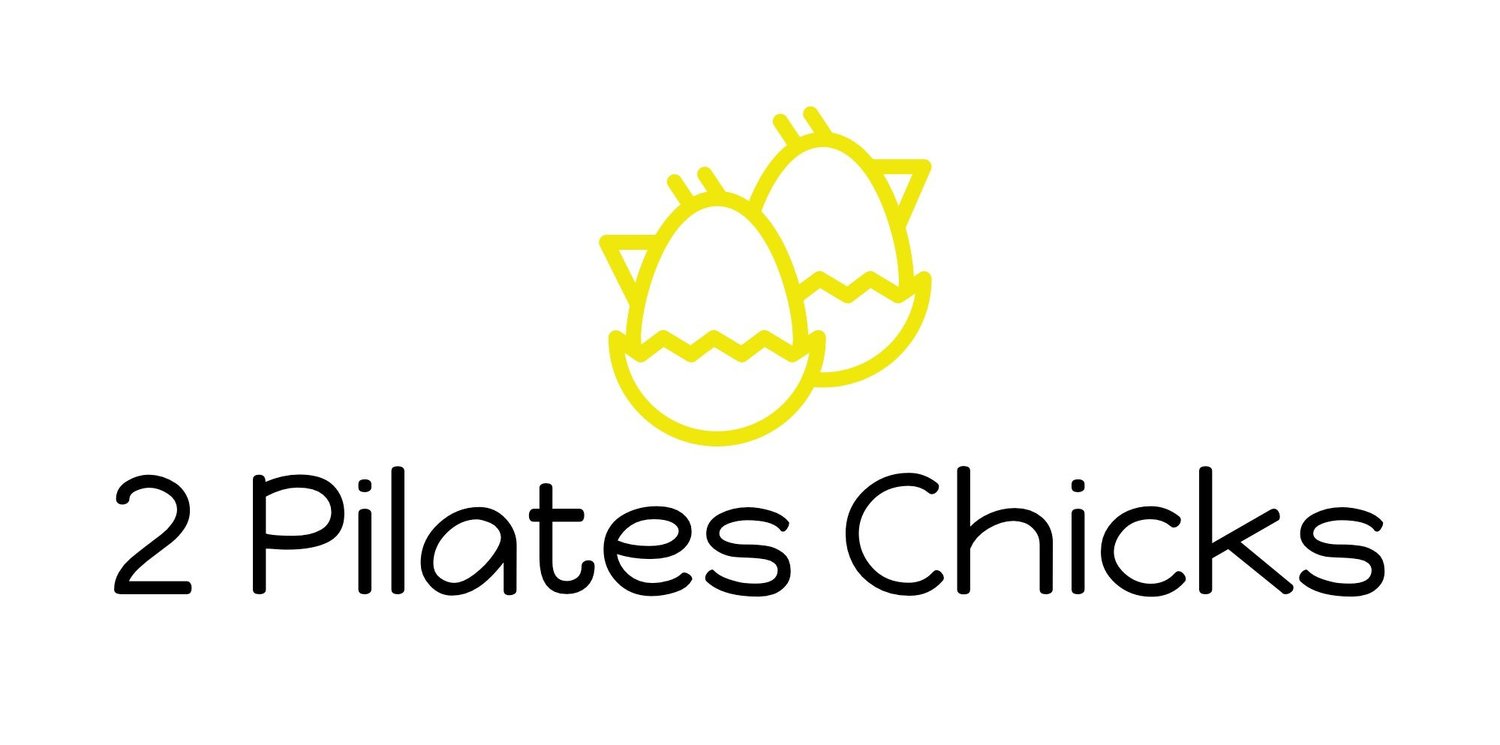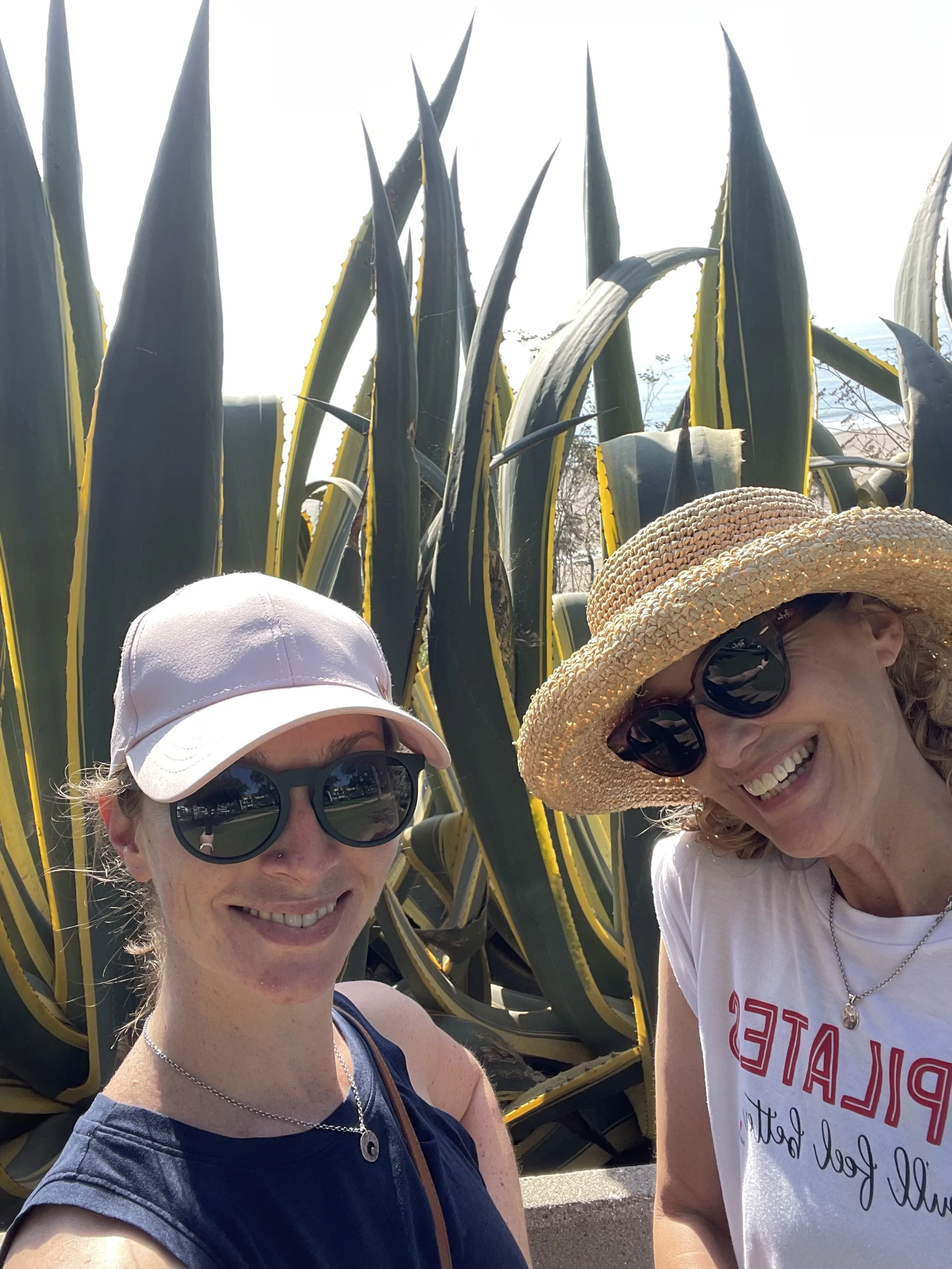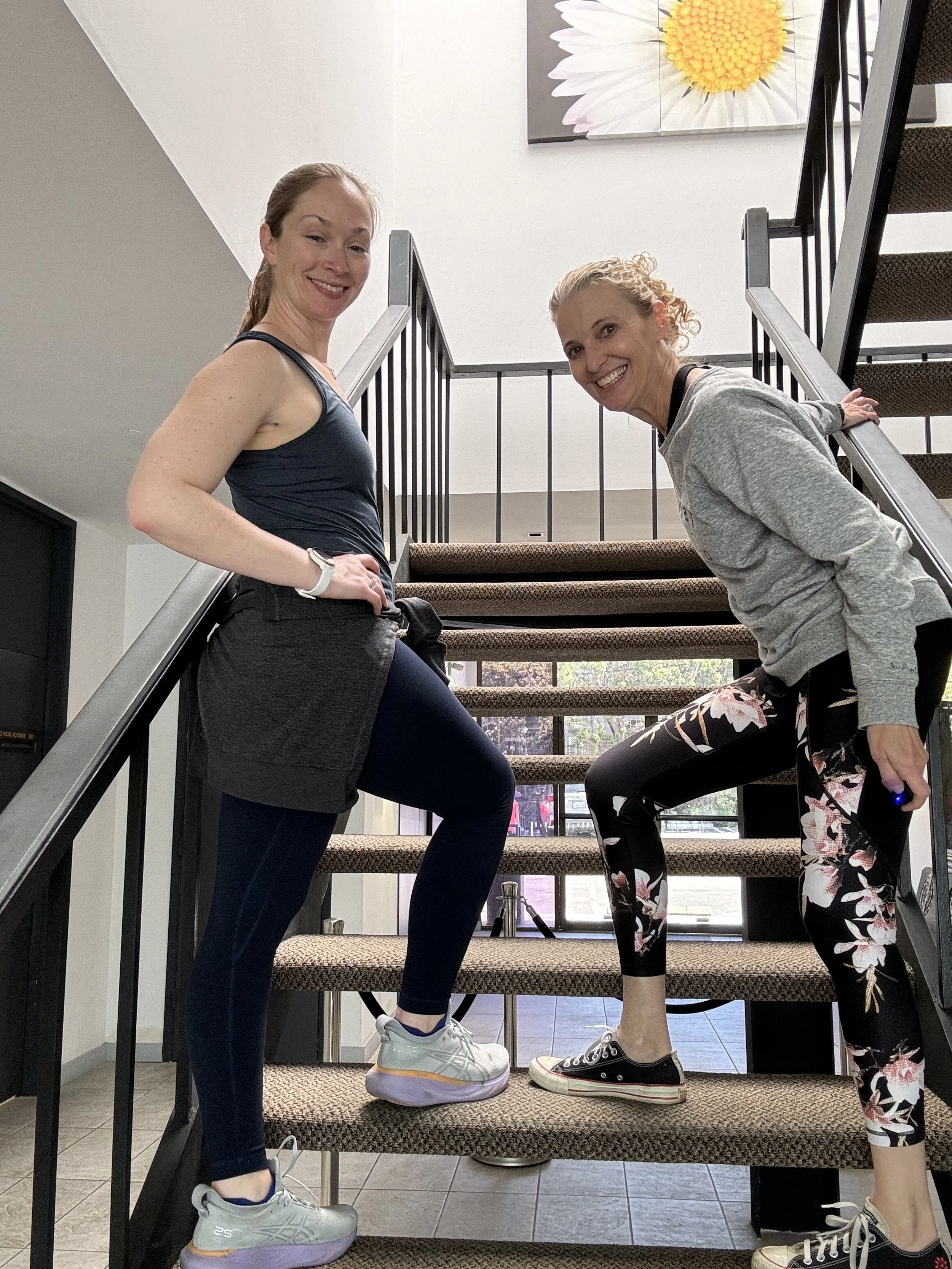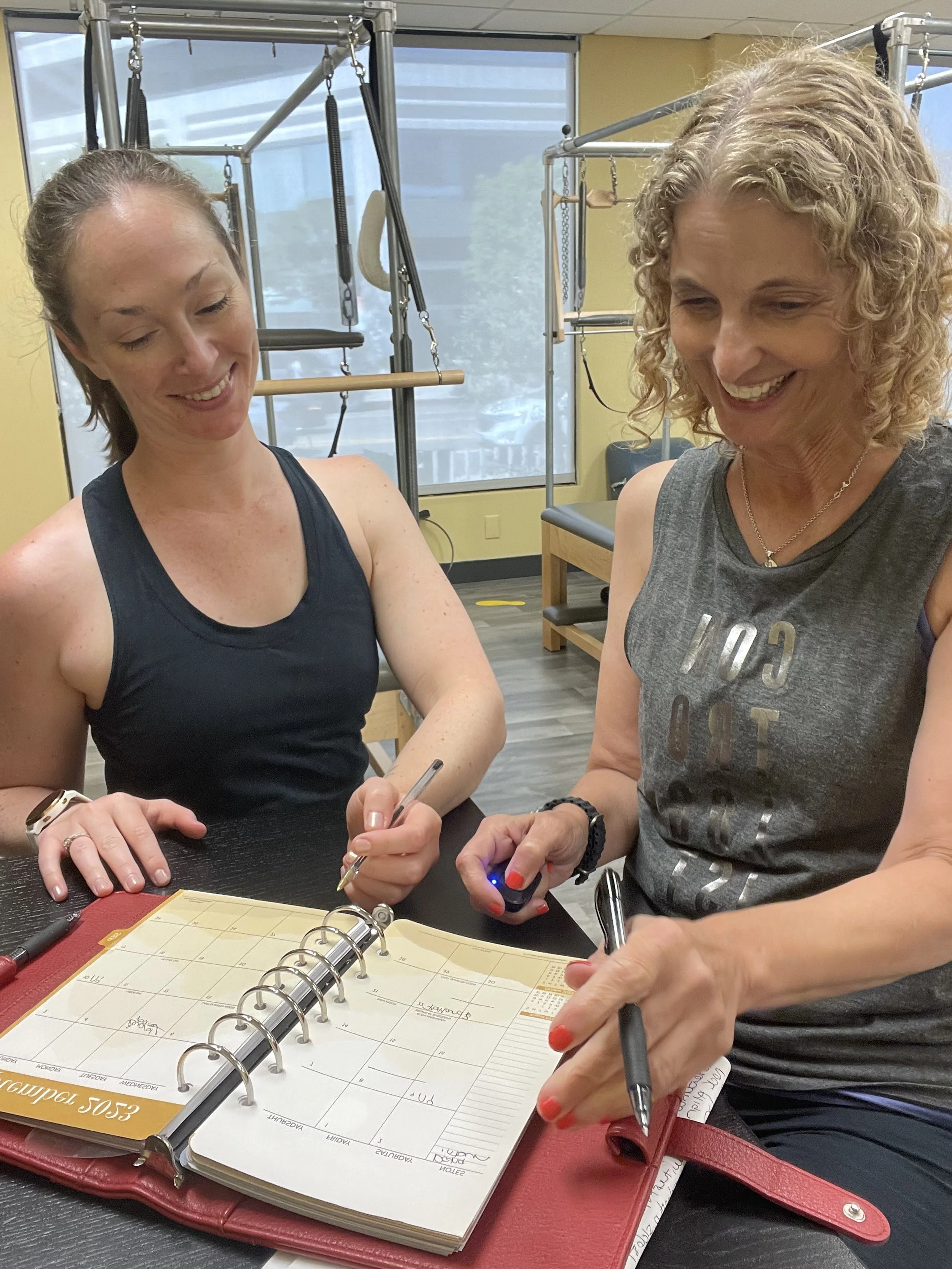How 2 Pilates Chicks became Pilates teachers
How did you become a Pilates teacher? What made you decide to do a teacher training program? What originally led you to Pilates as a practitioner?
We were asked this question by one of our podcast listeners and decided to do an episode on our paths into the Pilates practice and career. In S4E13 "Our Journey into Pilates", we discuss not only how we became teachers, but also how we first found Pilates as students, what inspired each of us to make teaching Pilates our career path, and our continuing journeys.
Originally, both Hilary and Davita found Pilates as a way to aid in pain and injury recovery, as many of our clients do as well. We each had injuries we needed to work through, and Pilates was recommended as a means of recovery. We each spent many years as clients, practicing Pilates and taking classes before ever thinking about becoming teachers. Interestingly, neither of us ever thought we would become Pilates teachers, and initially never had plans to do so.
Interestingly, we both came to Pilates from similar yet different paths. We were both involved in the movement world, Davita as a ballet dancer and Hilary as a group fitness instructor. For many years we each continued Pilates as a way to not only recover from injury but also to strengthen and inform our other movement practices.
For years we continued practicing Pilates until we were each encouraged to join teacher training programs to deepen our understanding and begin teaching Pilates. At first, it seems like so much, and easy to think "I can't teach that", or "Oh I already know Pilates, so why bother". When a student begins the path of learning how to teach they quickly realize how different it is learning Pilates from a client/student point of view versus from the teaching side. Each of us had thought that we knew so much about Pilates from many years of practice, but once we started learning to teach we realized how much we didn't know and how different practicing Pilates as a client is from teaching.
Davita was 14 years old, on the pre-professional Ballet track when she was experiencing severe low back pain from hypermobility and overuse. When she learned about Pilates from a fellow dancer who also had some back pain she decided to try it. It slowly helped her find control over her extreme range of motion, and strengthen her flexibility. She continued doing Pilates every week, even through collegiate and professional dancing. Davita always loved to move and found the Pilates mat exercises helpful as a warm-up before classes and rehearsals. When one of her Ballet teachers, who had a Pilates studio nearby, saw her doing mat work regularly she asked her to join her teacher training program to learn to teach.
Hilary had always been active and tried dance, swimming, tennis, and figure skating. During college, she realized her deep love of fitness and physical activity so she decided to become a group fitness instructor. She initially taught spin, step aerobics, and boxing, and became the fitness director at a private club. From all the group fitness classes Hilary eventually started experiencing knee pain, so a Pilates teacher who worked with her suggested she try Pilates.
Our initial reactions to Pilates were both similar but different as well. For Hilary, she immediately felt an amazing connection to the springs on the reformer the first time she pressed out in the footwork. She had never felt anything like that before and was hooked. For Davita coming from a dance background, she felt a sense of support and feedback from the springs, but thought it was also strangely familiar since Pilates is so complementary to Ballet, utilizing similar positions, movements, and concepts.
Once we each taught for a while we both remember a sense of wanting more. After teaching for a handful of years there's a moment when dedicated teachers realize they want to continue their own path of learning. Sometimes we feel we're missing something for our clients, that there's a gap in our knowledge, or that we need some inspiration and mentorship. Often this occurs around year 5, after we've spent time becoming comfortable in teaching the material, learning the business side, and finding our unique teaching method and clientele. After the initial stage in a career, there's this "now what" moment.
The key to being a good teacher is knowing what we don't know, and always continuing to learn. This foundation starts in the teacher training programs but must continue throughout our careers. Specifically for both Hilary and Davita, we each took our teacher training programs very seriously. We took the time to deeply study the work of exercise choreography, anatomy, precautions, and contraindications. We had flashcards, notebooks, and study guides we created in order to study all the material. Both of us remember feeling it was important to really understand what we were doing and why in order to have a strong foundation.
For Davita, as she developed her career, she had been taking on more clients with injuries and older clients who wanted to maintain health and activity. She felt capable of working with these clients and found a great interest in it. She had always been interested in the rehabilitative side of Pilates, and so wanted to learn more to feed into what she was already doing. She found a Master of Science program for Kinesiology and picked specializations in orthopedic rehabilitation corrective exercise, and geriatric exercise. After completing that program, Davita has since continued that work as her primary focus, using Pilates-based movements as corrective exercise to help clients post-rehabilitation, pre-op, and post-op, and to collaborate with Physical Therapists and Orthopedists.
For Hilary, her "what now" moment led her to get back into the traditional work of Joseph Pilates where her journey began. After teaching for many years at different studios she felt like all the noise was confusing and wanted to find more clarity and reconnect to the roots of Pilates. She enrolled in a program, "Pilates 360", by her friend Benjamin Degenhardt, studying the history and original work of Joseph Pilates. This later led her to study with Cara Reeser in "Heritage Training" focusing on the work of Kathy Grant, and "Movement Science Made Simple", another post-grad program for Pilates and movement science.
Neither of us could have predicted that we would not only be teaching Pilates as full-time careers, but that we would be specializing in the work we have found, Davita in orthopedic rehab, and Hilary in teaching teachers, and both of us running workshops for teachers' continuing education and doing our podcast!
We believe it's not always possible to plan what's going to happen, but it's important to put in the work and be prepared for opportunities when they arise. It's amazing to see all the different avenues teachers can take with Pilates, sharing the work with clients all over the world, with all of our unique specializations. A Pilates career is not a direct path, but it's important to find what works for each of us and go with it, seeing where it takes us.
Always keep learning and see where the journey will take you!






